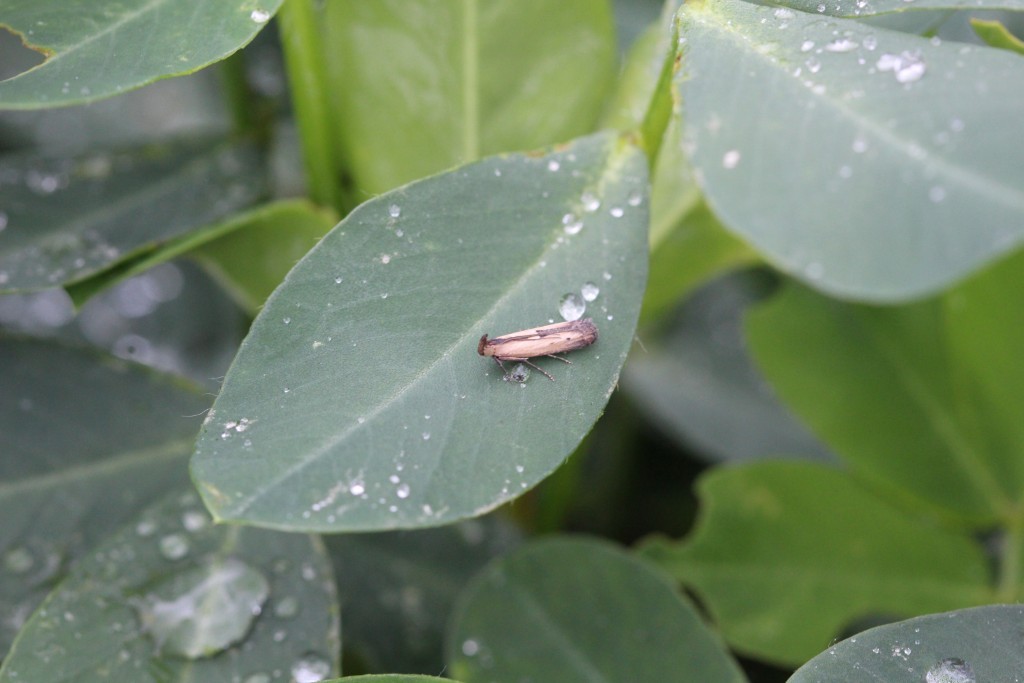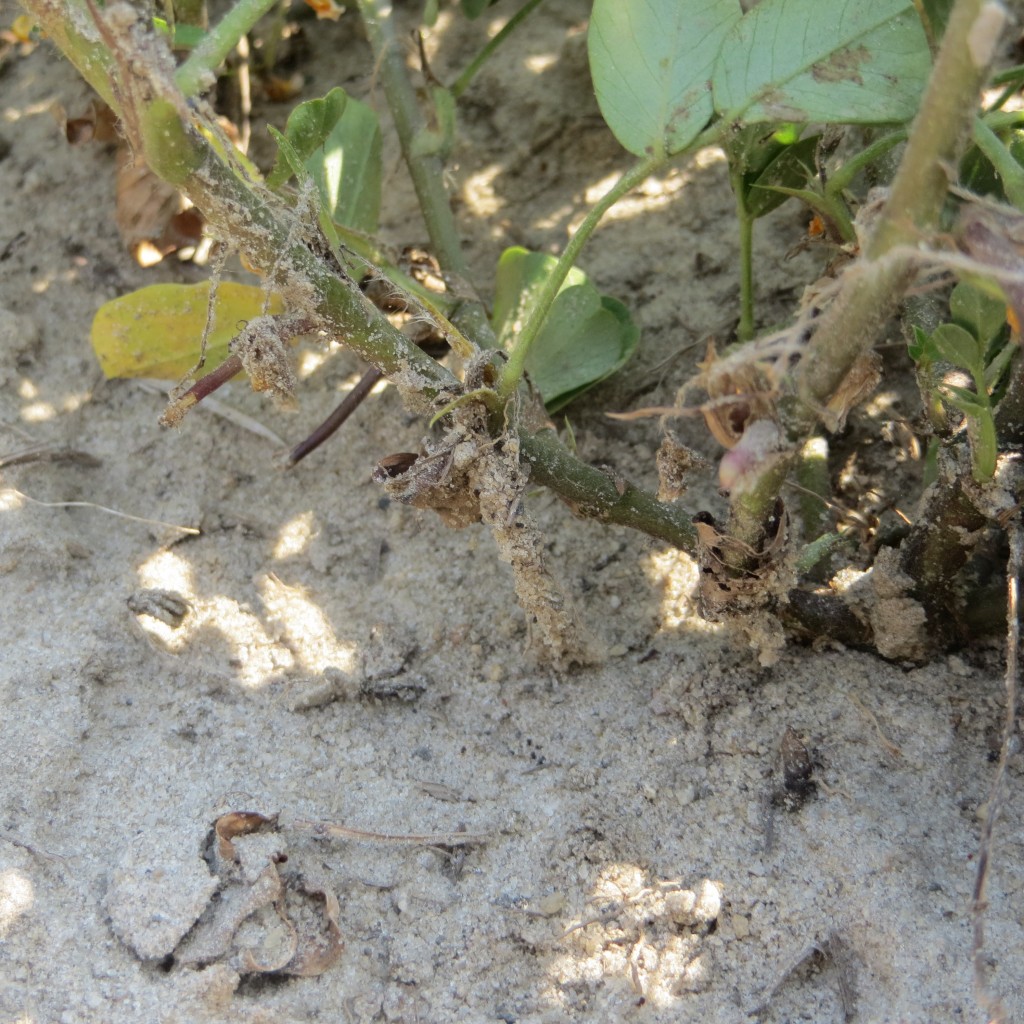These are more likely to be found in hot dry weather; in skippy stands, with lots of dirt showing (especially deep sands); non irrigated fields. We cannot keep bare soil wet enough to eliminate the pest with irrigation.Once the row middles are covered, we generally see fewer LCB if rainfall and/or irrigation are adequate. While they do not survive well in moist conditions, one or two rainfall events will not eliminate infestations. Treatment options for lesser cornstalk borer in peanut include chlorantraniliprole (Prevathon) or novaluron (Diamond) applied as broadcast foliar sprays.


